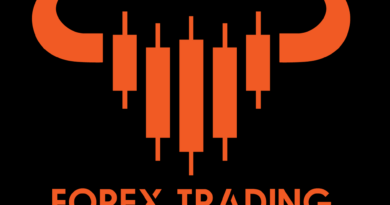How to Use the Leverage of Forex Trading

How to Use the Leverage of Forex Trading
Utilizing Leverage in Forex Trading
Introduction
Forex trading is the simultaneous buying and selling of different world’s currencies in hope of making a profit. It is a highly fluid and volatile market, where investors can take advantage of different trading opportunities. Leverage is a process which enables traders to open large positions using only a percentage of the total trade size. This can provide numerous advantages to experienced traders who can utilize market inefficiencies, increase profits and reduce risks.
Overview of Leverage
Leverage is a tool used by experienced traders to expand their positions beyond their initial investment. It is an integral part of the forex trading process and can be used to amplify potential profits. Essentially, leveraging allows traders to open larger positions than they would have been able to otherwise. The use of leverage involves borrowing a certain amount of capital from the broker, allowing traders to open positions which are larger than the balance in their trading account. With the right strategies, traders can use this to their advantage.
Types of Leverage
The most common types of leveraged forex trading are short selling, hedging, and margin trading. Short selling is a trading strategy which involves “borrowing” a certain amount of currency from the broker, selling it at a certain price, and then buying back the same amount of currency at a lower price. This allows traders to sell currency which they do not yet own and essentially take advantage of a falling market. Hedging involves protecting the trader’s position from the risk of a market downturn by establishing a barrier of protection. This allows traders to limit their losses in the event of a sudden market crash. Lastly, margin trading enables traders to open larger positions than the amount of money in their trading account. This ensures that traders can open large positions without having to put in all the capital up front.
How to Utilize Leverage
When utilizing leverage, it is important to understand the concept of margin requirements. Margin requirements are determined by the broker, and they vary depending on the type of leverage used. For example, short selling typically requires the trader to have a margin of at least 10%. This means that the broker will not let the trader open a position larger than 10% of their total trading balance. It is important to research the margin requirements of each type of leverage before utilizing them.
Examples of Leverage
Short Selling: Short selling is a trading strategy which involves “borrowing” a certain amount of currency from the broker, selling it at a certain price, and then buying back the same amount of currency at a lower price. This allows traders to make profits from the difference in prices, while also avoiding taking on any new debt.
Hedging: Hedging allows users to protect their trades from the risk of a sudden market downturn. This is done by leveraging a certain type of derivative or security, such as stock index futures or options, which allows traders to establish a barrier of protection between themselves and the market. This can reduce risk and ensure that losses are minimized.
Margin Trading: Margin trading is a type of leveraging which enables traders to open larger positions than the amount of money in their trading account. This provides traders with the ability to open larger positions without having to put in all the capital up front. This can be a great advantage to experienced traders who know how to make the most of their positions.
Benefits of Leverage
Increasing profitability: Leverage can be used as a tool to magnify profits. This means that traders can open larger positions than they would have been able to otherwise. This can enable traders to take advantage of lucrative opportunities and increase their potential profits.
Reduce exposure: Leverage can also be used to reduce exposure and protect traders against sudden market downturns. This can be done through hedging strategies and margin trading, which can help traders limit their losses.
Risks of Leverage
Potential losses: Leverage can be a powerful tool, but it also comes with a number of risks. As with any investment, leveraging can lead to potential losses. In extreme cases, traders can find themselves in debt from over-leveraging.
Margin calls: Margin calls occur when traders do not have sufficient funds in their trading account to cover their open positions. This can lead to the trader being forced to close their positions quickly, resulting in losses.
Conclusion
Leveraging forex trading offers numerous advantages to experienced traders. It can be used as a tool to magnify profits, reduce exposure and limit risk. However, it is important to understand the risks associated with leveraging before utilizing it. By having a good grasp on the concept of leverage and becoming familiar with the various types of leverage available, traders can gain an edge in the forex market and make informed decisions in order to maximize their profits.
Forex trading, also known as foreign exchange trading, is the largest global financial market, where currencies from different countries are traded. It is a market in which there is huge potential for making money. With the potential to profit on both rising and falling markets, traders use leverage to maximize their potential for profits.
Leverage is the use of borrowed capital to amplify potential gains and losses. Leverage in forex trading refers to the use of borrowed capital to increase the amount of capital that can be used to trade. It allows traders to open large positions with a relatively small amount of their own funds. Leverage is expressed as a ratio such as 50:1, which means that you can control up to 50 times the amount of currency you have. One of the keys to successful forex trading is to use leverage responsibly and not overleverage yourself.
When using leverage, you should never risk more than 2-3% of your account, no matter how confident you are. Leverage can increase potential gains and losses, so traders need to use it wisely and with caution. The best way to use leverage in forex trading is to do a risk assessment before trading. You should consider the amount of capital needed to make a trade, the amount of leverage you are willing to use, and other elements that may affect the risk you are taking.
With this information in hand, you will be able to make more informed trading decisions. In conclusion, leverage in forex trading can be a great way to leverage yourself to greater profits. However, it should be used with caution, as it can lead to increased losses if the market moves the wrong way.
Therefore, it’s important to understand how to use leverage responsibly and with an understanding of its associated risks. With the right mindset and an in-depth understanding of the trading process, traders can make the most of the potential of forex trading.




